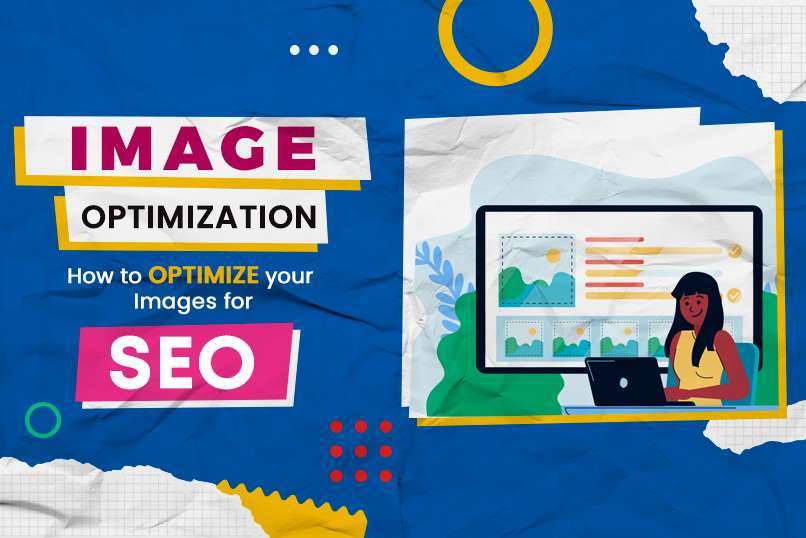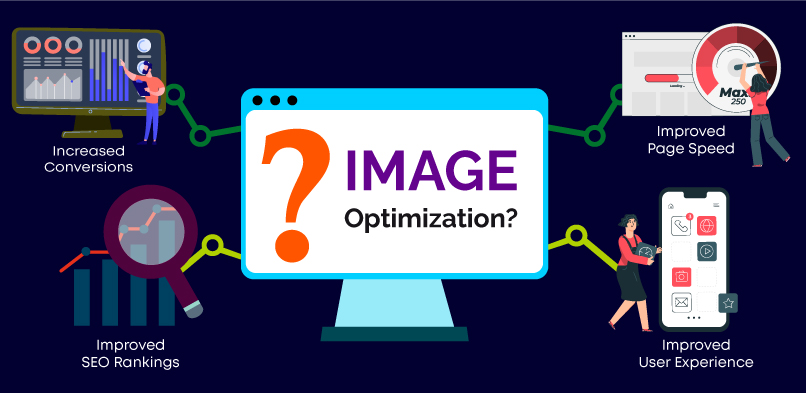
Image optimization is the process of decreasing your photos' size as much as possible without compromising quality so that your site's load times are kept low. Image SEO is also a part of, and that is the process of getting your product pictures and other images to rank well on Google and the other search engines for images.
Image optimization can help improve a page's speed and improve your user's experience. It's one of the techniques for SEO on-page that can significantly impact the position of a page. If the image is ranked highly within the Image Search area of Google, There is the possibility of gaining organic visits to your site that can aid in increasing traffic through organic search.
Before we dive into Optimization strategies, let's examine the significance of optimizing web images in more detail:
The time required to allow a Web webpage to open must be as low as it is. Waiting for your visitors to wait for an image-loaded Web page could cause them to leave. Therefore, optimizing images is a critical factor in minimizing page load speed. Images provide most of the weight of a site or web page, and optimizing them can dramatically reduce the time it takes to load a page.
Image Optimization Image Optimization is a process that delivers high-quality pictures on Web websites in the proper format while making sure that the image is the smallest size possible.
Images of high quality are essential for maintaining the quality of your site. So, choosing the correct dimensions of sizes, formats, and sizes of images you upload to your website is essential. For instance, the JPEG format is more SEO-friendly, and the JPEG file format can be more SEO efficient than the PNG format.
As we've mentioned before, users tend to leave the site if the website is slow to load. Suppose you are aware of the meaning of image optimization and how you can implement it to improve the users' experience.
The ideal web page will load and show in about 2 seconds. In general, if your website is optimized for images, it implies that the loading speed of your site will be nearly the same for all devices with an internet connection. That is the primary step in improving your website's user experience.
You need to make sure that your site loads quickly on PCs and devices such as tablets and smartphones. That should not only encourage the visitor to stay on your site but also look into the offerings of your services and products.
It's been proven that the speed of loading pages is an essential element that determines ranking on search engines for websites. Google has also begun to consider the speed of loading pages as a critical factor when choosing the rank of websites.
That was a problem to navigate for numerous sites, so they were forced to boost the game of image optimization to ensure that their load time could be as short as they could.
That demonstrates the importance of ensuring that image optimization is carried out at its best before or after the launch of a website to ensure that the results of search engines are not affected. Anyone who is a digital marketer in 2020 understands the importance of a high SEO ranking for every website.
With a higher SEO ranking, your site has a higher chance of getting clicked and has the potential to create a positive impression on the users by providing an overall user experience that is of its importance. The following section explores the subject more deeply.
The primary effect of having good results in search engine ranking is that traffic to your website will increase significantly. That means that you're attracted to more visitors to your site, and the number of visitors is growing, and, in turn, this results in more chances for conversions.
A study, for instance, discovered that 79% of people who weren't satisfied with the speed of loading did not want to revisit the same website. That is an obvious indication of why optimization for images is a vital aspect of the design and maintenance of every Web site.
If your website is optimized and contains high-quality information (including images), Visitors are encouraged to share it with friends who might be interested in the same subject. That increases the number of visitors to your site and increases the likelihood of converting more visitors.

Image file types affect the speed of your page. It is, therefore, crucial to select the proper file format for your photo. The three most frequently utilized file types used by websites are JPEG, GIF, and PNG. The main difference among these three types of files is the dimensions, and PNG is the most significant size, followed by GIFs and JPEG images.
Although Google has made tremendous advances with machine learning, it will aid Google when we provide some context to our images with the file's name. For instance, if an image you create is related to biscuits, it is suggested to name the file 'biscuits.jpg rather than an autosave name for the file, which usually takes the format of 'img324.jpg'.
It has been observed that most websites have pages in the correct folder. That isn't the case with images, and images are generally placed in one folder only. The same approach to adding images to the appropriate folders of the site gives more context to the image.
Image alt text, also known as alternative text, is another characteristic that assists in describing the context of an image to search engines. It is utilized by screen readers, which help those with visual impairments navigate online and can be shown when there is a problem rendering the image. That can improve the user experience. It is one of the Google indexing factors. The length of the text must be less than 100 characters.
Image title text offers an additional possibility to make the image more relevant to the website and the image. This text will be visible when users hover over an image. Similar to alt text, you can also use the image's title text to provide additional context to the image.
It is highly recommended to include an image sitemap to improve the chances of your site's image being displayed on the image searches vertical results of Google. An image sitemap can help Google find images that are served via Javascript code that it could not otherwise locate. You can make a new sitemap that lists all the images or includes the current sitemap information.
Do not use stock images to make your site stand out and offer an enhanced user experience. The more original and good quality images you've got on your site more likely are your chances of ranking. Don't forget to test whether your photos are responsive to various devices or not. Find out how your images appear on desktops, mobiles, and tablets to ensure a good user experience.
When you've optimized your images, how can you determine if your loading times for pages on your website are speedy enough? Make use of one of the following tools to test your website's speed:
Since your site and its content are constantly changing, It's best to check your website's stats as time passes.
Image optimization techniques ensure that the image's name and the path, alt, and title tags provide the correct context for the image to search engines. Additionally, choose the type that best suits the purpose you are trying to accomplish using the image and monitor the file's size.